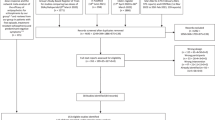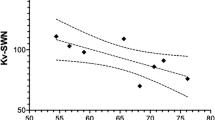Abstract
The novel antipsychotic aripiprazole requires high (>90%) striatal D2 receptor occupancy (D2RO) to be clinically active, but despite its high D2RO it does not show extrapyramidal symptoms. While most antipsychotics are active at nearly 65% D2RO, they show motor side effects when D2RO exceeds 80%. We investigated this discrepancy between D2RO, 5HT2 receptor occupancy (5-HT2RO) and in vivo functional activity of aripiprazole in comparison to haloperidol (typical) and risperidone (atypical) in animal models. All three drugs showed dose-dependent D2RO. While risperidone clearly showed higher 5-HT2RO than D2RO, aripiprazole and haloperidol showed higher D2RO than 5-HT2RO at all doses. Haloperidol and risperidone induced catalepsy at doses producing >80% D2RO, while aripiprazole despite higher D2RO (>90%) induced no catalepsy. Haloperidol and risperidone's ED50 values for inhibition of conditioned avoidance response (CAR) and amphetamine-induced locomotor activity (AIL) corresponded to ∼60% D2RO. In contrast, aripiprazole showed a significant dissociation; while it blocked AIL at similar D2RO, a 23-fold higher dose (86% D2RO) was required to inhibit CAR. FOS expression in shell region of the nucleus accumbens was significant for all drugs at D2ROs that were effective in CAR. However, in the core region of the nucleus accumbens and dorsolateral striatum, aripiprazole differed from the others in that despite high D2RO it induced low FOS. Haloperidol and risperidone showed dose/occupancy-dependent prolactin elevations, while aripiprazole did not. Across models, haloperidol and risperidone show similar occupancy-functional antagonism of the D2 system, while aripiprazole shows a clear dissociation. Partial agonism of aripiprazole offers a good explanation for this dissociation and provides a framework for understanding occupancy-functional relationships of partial D2 agonist antipsychotics.
Similar content being viewed by others
Log in or create a free account to read this content
Gain free access to this article, as well as selected content from this journal and more on nature.com
or
References
Ahlenius S, Hillegaart V (1986). Involvement of extrapyramidal motor mechanisms in the suppression of locomotor activity by antipsychotic drugs: a comparison between the effects produced by pre- and post-synaptic inhibition of dopaminergic neurotransmission. Pharmacol Biochem Behav 24: 1409–1415.
Akam E, Strange PG (2004). Inverse agonist properties of atypical antipsychotic drugs. Biochem Pharmacol 67: 2039–2045.
Andersen HL, Kilpatrick IC (1996). Prevention by (+/−)-8-hydroxy-2-(di-n-propylamino)tetralin of both catalepsy and the rises in rat striatal dopamine metabolism caused by haloperidol. Br J Pharmacol 118: 421–427.
Arnt J, Skarsfeldt T, Hyttel J (1997). Differentiation of classical and novel antipsychotics using animal models. Int Clin Psychopharmacol 12 (Suppl 1): S9–S17.
Burris KD, Molski TF, Xu C, Ryan E, Tottori K, Kikuchi T et al (2002). Aripiprazole, a novel antipsychotic, is a high-affinity partial agonist at human dopamine D2 receptors. J Pharmacol Exp Ther 302: 381–389.
Cox RF, Waszczak BL (1990). Irreversible receptor inactivation reveals differences in dopamine receptor reserve between A9 and A10 dopamine systems: an electrophysiological analysis. Brain Res 534: 273–282.
Deutch AY, Lee MC, Iadarola MJ (1992). Regionally specific effects of atypical antipsychotic drugs on striatal Fos expression: the nucleus accumbens shell as a locus of antipsychotic action. Mol Cell Neurosci 3: 332–341.
Dragunow M, Robertson GS, Faull RL, Robertson HA, Jansen K (1990). D2 dopamine receptor antagonists induce fos and related proteins in rat striatal neurons. Neuroscience 37: 287–294.
Enz A, Goldstein M, Meller E (1990). Dopamine agonist-induced elevation of striatal acetylcholine: relationship between receptor occupancy and response in normal and denervated rat striatum. Mol Pharmacol 37: 560–565.
Farde L, Nordstrom AL, Wiesel FA, Pauli S, Halldin C, Sedvall G (1992). Positron emission tomographic analysis of central D1 and D2 dopamine receptor occupancy in patients treated with classical neuroleptics and clozapine. Relation to extrapyramidal side effects. Arch Gen Psychiatry 49: 538–544.
Farde L, Wiesel FA, Halldin C, Sedvall G (1988). Central D2-dopamine receptor occupancy in schizophrenic patients treated with antipsychotic drugs. Arch Gen Psychiatry 45: 71–76.
Finney DJ (1971). Probit Analysis. Cambridge University Press: London.
Hertel P, Olsen CK, Didriksen M, Arnt J, Marquis K, van der Heyden J et al (2005). Bifeprunox: a New and Different Antipsychotic. International Congress on Schizophrenia Research. Savannah Georgia, USA.
Hirose T, Uwahodo Y, Yamada S, Miwa T, Kikuchi T, Kitagawa H et al (2004). Mechanism of action of aripiprazole predicts clinical efficacy and a favourable side-effect profile. J Psychopharmacol 18: 375–383.
Hoffman DC, Donovan H (1995). Catalepsy as a rodent model for detecting antipsychotic drugs with extrapyramidal side effect liability. Psychopharmacology (Berl) 120: 128–133.
Inoue T, Domae M, Yamada K, Furukawa T (1996). Effects of the novel antipsychotic agent 7-(4-[4-(2,3-dichlorophenyl)-1-piperazinyl]butyloxy)-3,4-dihydro -2(1H)-quinolinone (OPC-14597) on prolactin release from the rat anterior pituitary gland. J Pharmacol Exp Ther 277: 137–143.
Jordan S, Koprivica V, Chen R, Tottori K, Kikuchi T, Altar CA (2002). The antipsychotic aripiprazole is a potent, partial agonist at the human 5-HT1A receptor. Eu J Pharmacol 441: 137–140.
Kane JM, Carson WH, Saha AR, McQuade RD, Ingenito GG, Zimbroff DL et al (2002). Efficacy and safety of aripiprazole and haloperidol versus placebo in patients with schizophrenia and schizoaffective disorder. J Clin Psychiatry 63: 763–771.
Kapur S, Langlois X, Vinken P, Megens AA, De Coster R, Andrews JS (2002). The differential effects of atypical antipsychotics on prolactin elevation are explained by their differential blood–brain disposition: a pharmacological analysis in rats. J Pharmacol Exp Ther 302: 1129–1134.
Kapur S, Remington G, Jones C, Wilson A, DaSilva J, Houle S et al (1996). High levels of dopamine D2 receptor occupancy with low-dose haloperidol treatment: a PET study. Am J Psychiatry 153: 948–950.
Kapur S, Remington G, Zipursky RB, Wilson AA, Houle S (1995). The D2 dopamine receptor occupancy of risperidone and its relationship to extrapyramidal symptoms: a PET study. Life Sci 57: PL103–PL107.
Kapur S, Zipursky R, Jones C, Remington G, Houle S (2000a). Relationship between dopamine D(2) occupancy, clinical response, and side effects: a double-blind PET study of first-episode schizophrenia. Am J Psychiatry 157: 514–520.
Kapur S, Zipursky R, Jones C, Shammi CS, Remington G, Seeman P (2000b). A positron emission tomography study of quetiapine in schizophrenia: a preliminary finding of an antipsychotic effect with only transiently high dopamine D2 receptor occupancy. Arch Gen Psychiatry 57: 553–559.
Kapur S, Zipursky RB, Remington G (1999). Clinical and theoretical implications of 5-HT2 and D2 receptor occupancy of clozapine, risperidone, and olanzapine in schizophrenia. Am J Psychiatry 156: 286–293.
Kikuchi T, Tottori K, Uwahodo Y, Hirose T, Miwa T, Oshiro Y et al (1995). 7-(4-[4-(2,3-Dichlorophenyl)-1-piperazinyl]butyloxy)-3,4-dihydro-2(1H)-qui nolinone (OPC-14597), a new putative antipsychotic drug with both presynaptic dopamine autoreceptor agonistic activity and postsynaptic D2 receptor antagonistic activity. J Pharmacol Exp Ther 274: 329–336.
Kleven MS, Barret-Grevoz C, Slot LB, Newman-Tancredi A (2005). Novel antipsychotic agents with 5-HT(1A) agonist properties: role of 5-HT(1A) receptor activation in attenuation of catalepsy induction in rats. Neuropharmacology 49: 135–143.
Lawler CP, Prioleau C, Lewis MM, Mak C, Jiang D, Schetz JA et al (1999). Interactions of the novel antipsychotic aripiprazole (OPC-14597) with dopamine and serotonin receptor subtypes. Neuropsychopharmacology 20: 612–627.
Marder SR, McQuade RD, Stock E, Kaplita S, Marcus R, Safferman AZ et al (2003). Aripiprazole in the treatment of schizophrenia: safety and tolerability in short-term, placebo-controlled trials. Schizophr Res 61: 123–136.
Meller E, Hizami R, Kreuter L (1989). Hypothermia in mice: D2 dopamine receptor mediation and absence of spare receptors. Pharmacol Biochem Behav 32: 141–145.
Meller E, Puza T, Miller JC, Friedhoff AJ, Schweitzer JW (1991). Receptor reserve for D2 dopaminergic inhibition of prolactin release in vivo and in vitro. J Pharmacol Exp Ther 257: 668–675.
Meltzer HY (1999). The role of serotonin in antipsychotic drug action. Neuropsychopharmacology 21 (Suppl 1): S106–S115.
Miyamoto S, Duncan GE, Marx CE, Lieberman JA (2005). Treatments for schizophrenia: a critical review of pharmacology and mechanisms of action of antipsychotic drugs. Mol Psychiatry 10: 79–104.
Oka T, Hamamura T, Lee Y, Miyata S, Habara T, Endo S et al (2004). Atypical properties of several classes of antipsychotic drugs on the basis of differential induction of Fos-like immunoreactivity in the rat brain. Life Sci 76: 225–237.
Paxinos G, Watson C (1986). The Rat Brain in Stereotaxic Coordinates. Academic press: New York.
Pijnenburg AJ, Honig WM, Van Rossum JM (1975). Inhibition of d-amphetamine-induced locomotor activity by injection of haloperidol into the nucleus accumbens of the rat. Psychopharmacologia 41: 87–95.
Potkin SG, Saha AR, Kujawa MJ, Carson WH, Ali M, Stock E et al (2003). Aripiprazole, an antipsychotic with a novel mechanism of action, and risperidone vs placebo in patients with schizophrenia and schizoaffective disorder. Arch Gen Psychiatry 60: 681–690.
Robertson GS, Fibiger HC (1996). Effects of olanzapine on regional C-Fos expression in ratforebrain. Neuropsychopharmacology 14: 105–110.
Robertson GS, Matsumura H, Fibiger HC (1994). Induction patterns of Fos-like immunoreactivity in the forebrain as predictors of atypical antipsychotic activity. J Pharmacol Exp Ther 271: 1058–1066.
Shapiro DA, Renock S, Arrington E, Chiodo LA, Liu LX, Sibley DR et al (2003). Aripiprazole, a novel atypical antipsychotic drug with a unique and robust pharmacology. Neuropsychopharmacology 28: 1400–1411.
Sumiyoshi T, Suzuki K, Sakamoto H, Yamaguchi N, Mori H, Shiba K et al (1995). Atypicality of several antipsychotics on the basis of in vivo dopamine-D2 and serotonin-5HT2 receptor occupancy. Neuropsychopharmacology 12: 57–64.
Tamminga CA (2002). Partial dopamine agonists in the treatment of psychosis. J Neural Transm 109: 411–420.
Wadenberg MG, Browning JL, Young KA, Hicks PB (2001a). Antagonism at 5-HT(2A) receptors potentiates the effect of haloperidol in a conditioned avoidance response task in rats. Pharmacol Biochem Behav 68: 363–370.
Wadenberg ML, Cortizo L, Ahlenius S (1994). Evidence for specific interactions between 5-HT1A and dopamine D2 receptor mechanisms in the mediation of extrapyramidal motor functions in the rat. Pharmacol Biochem Behav 47: 509–513.
Wadenberg ML, Hicks PB (1999). The conditioned avoidance response test re-evaluated: is it a sensitive test for the detection of potentially atypical antipsychotics? Neurosci Biobehav Rev 23: 851–862.
Wadenberg ML, Hicks PB, Richter JT, Young KA (1998). Enhancement of antipsychotic like properties of raclopride in rats using the selective serotonin2A receptor antagonist MDL 100,907. Biol Psychiatry 44: 508–515.
Wadenberg ML, Kapur S, Soliman A, Jones C, Vaccarino F (2000). Dopamine D2 receptor occupancy predicts catalepsy and the suppression of conditioned avoidance response behavior in rats. Psychopharmacology (Berl) 150: 422–429.
Wadenberg ML, Soliman A, VanderSpek SC, Kapur S (2001b). Dopamine D(2) receptor occupancy is a common mechanism underlying animal models of antipsychotics and their clinical effects. Neuropsychopharmacology 25: 633–641.
Yokoi F, Grunder G, Biziere K, Stephane M, Dogan AS, Dannals RF et al (2002). Dopamine D2 and D3 receptor occupancy in normal humans treated with the antipsychotic drug aripiprazole (OPC 14597): a study using positron emission tomography and [11C]raclopride. Neuropsychopharmacology 27: 248–259.
Zhang W, Bymaster FP (1999). The in vivo effects of olanzapine and other antipsychotic agents on receptor occupancy and antagonism of dopamine D1, D2, D3, 5HT2A and muscarinic receptors. Psychopharmacology (Berl) 141: 267–278.
Acknowledgements
This study was funded by a CIHR grant to Shitij Kapur. We thank Eli Lilly for the supply of aripiprazole. Suzi VanderSpeck, Doug Hussey, and Jun Parkes of the PET group and Karen Barlow of the Neuroimaging section of CAMH are acknowledged for their technical assistance.
Author information
Authors and Affiliations
Corresponding author
Rights and permissions
About this article
Cite this article
Natesan, S., Reckless, G., Nobrega, J. et al. Dissociation between In Vivo Occupancy and Functional Antagonism of Dopamine D2 Receptors: Comparing Aripiprazole to Other Antipsychotics in Animal Models. Neuropsychopharmacol 31, 1854–1863 (2006). https://doi.org/10.1038/sj.npp.1300983
Received:
Revised:
Accepted:
Published:
Issue date:
DOI: https://doi.org/10.1038/sj.npp.1300983
Keywords
This article is cited by
-
Structure-based design of a novel third-generation antipsychotic drug lead with potential antidepressant properties
Nature Neuroscience (2022)
-
Spironolactone alleviates schizophrenia-related reversal learning in Tcf4 transgenic mice subjected to social defeat
Schizophrenia (2022)
-
Effect of 5-HT2A receptor antagonism on levels of D2/3 receptor occupancy and adverse behavioral side-effects induced by haloperidol: a SPECT imaging study in the rat
Translational Psychiatry (2021)
-
Modulation by chronic antipsychotic administration of PKA- and GSK3β-mediated pathways and the NMDA receptor in rat ventral midbrain
Psychopharmacology (2019)
-
The relationship between dopamine receptor blockade and cognitive performance in schizophrenia: a [11C]-raclopride PET study with aripiprazole
Translational Psychiatry (2018)



